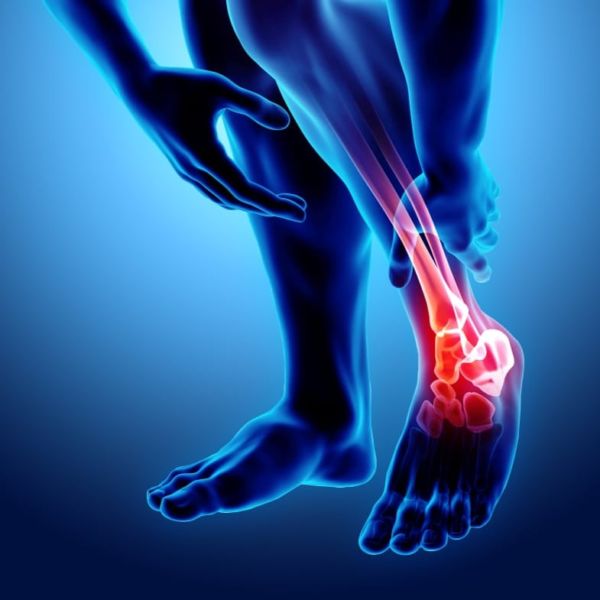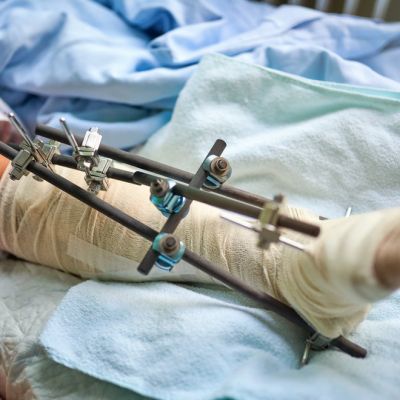Minimally Invasive Surgery: Foot & Ankle (MIS)
Minimally invasive foot and ankle Surgery, or Minimal Incision Surgery (MIS) is always of interest to patients and surgeons alike. This less invasive type of surgery can result in better cosmetic results, quicker recovery times and less post-operative pain. However, there can also be severe complications related to Minimal Incision Surgery if attempted for the wrong condition or procedure. Nerve or blood vessel injuries, tendon or ligament injuries, mal-unions or non-unions of bone are some of the problems we’ve seen when this type of surgery goes wrong. Therefore, at Certified Foot and Ankle Specialists, we reserve Minimally Invasive Surgery for those conditions and procedures which are well documented in the evidence based scientific literature to be successful and with relatively low risk, including those detailed below.
Procedure: Endoscopic Plantar Fascitomy (EPF)
Condition Treated: Plantar Fasciitis (Heel Pain)
Heel pain is literally the most common complaint we hear from patients and is most often the result of Plantar Fasciitis. The underlying cause of Plantar Fasciitis is tightness of the fascia, which may be stemming from a number of underlying internal or external factors. This chronic tightness causes strain on the fascia during weight bearing, resulting in pain and inflammation. When this type of heel pain does not respond to conservative treatment, a minimally invasive Endoscopic Plantar Fasciotomy is often indicated.
EPF is a simple out-patient procedure that takes approximately 10 minutes. It is performed under general or local anesthesia with sedation using one or two small (1 cm) incisions on the side(s) of one’s heel. To visualize a patient’s tight plantar fascia, the surgeon uses a small camera, also known as an endoscope. A small hook blade is then deployed to cut, or “release” the plantar fascia, thereby relieving the problematic excessive tension and relieving the pain. One stitch is placed in each incision and the patient is able to bare weight immediately and return to activity as tolerated. This procedure has been widely accepted and proven to be a safe and effective treatment option for over 30 years.

Procedure: Ankle Arthroscopy
Conditions Treated: Ankle Pain, Ankle Arthritis, Bone Spurs, Ligament and Cartilage Injuries
Arthroscopy is defined as joint surgery using a scope or small camera, which is placed inside the joint through one or two small, 1 cm incisions. Tiny instruments are used by the surgeon under direct visualization to repair defects in cartilage or ligaments, remove loose fragments in the joint, debride synovitis or inflamed scare tissue, or shave bone spurs inside a joint. Arthroscopic surgery has been available for over 40 years and is well accepted as a safe and effective form of minimally invasive surgery. It is typically performed under general or regional anesthesia in a hospital or surgery center. The patient goes home immediately, and the course of recovery depends on the nature of the condition being treated. Several of the surgeons at Certified Foot and Ankle Specialists have advanced training in this type of surgery and employ it regularly in the appropriate setting.

Procedure: Tenotomy
Conditions Treated: Hammertoes, Foot and Ankle Contractures
Hammertoes, or crooked toes, are a common complaint among patients. Hammertoes are the result of a muscular/tendon imbalance that causes the toe to contract or to become fixed in a crooked, bent position. This can lead to pain at the tip of the toe, the top of the toe or even the ball of the foot. Fortunately, most hammertoes will respond to a simple, quick and effective in-office percutaneous, minimally invasive procedure using local anesthesia and a needle to release the tight tendon. The effects are dramatic in straightening the toe immediately, without the need for an incision – NO STITCHES! Patients are able to walk out with a band-aid and return to normal activity.
Other contractures around the foot and ankle can also be treated with minimal incisions such as a tight Achilles (equinus) which often results in forefoot pressure or wounds in diabetics. When this tendon is released, usually in the operating room through three small incisions, the wound will disappear. Met-Adductus, Varus or Valgus deformities are often more complex and result in the patients walking abnormally, preventing their foot hitting the ground in the normal, flat position. Fortunately, in some cases, these deformities can be treated with minimally invasive tendon releases, as well. These procedures will allow patients to recover quickly and to walk in regular shoes, sometimes with a brace or a boot, almost immediately. Tenotomies, or tendon releases through minimal incisions, have been an accepted form of surgery for well over 50 years.
Procedure: Subchondroplasty
Conditions Treated: OCD’s, Bone Cysts, Bone Contusions, Stress Reactions and Stress Fractures
OCD’s, Bone Cysts (Arthritis or Otherwise), Bone Contusions (from ankle sprains or other trauma), Stress reactions (from severe plantar fasciitis) and stress fractures (simply from over use) are common painful conditions treated in our practice. Recently, with the development of rapidly hardening tri-calcium phosphate (synthetic bone void filler) and special instrumentation, our surgeons are able to treat these conditions with a simple needle stick into the bone under x-ray guidance. The bone void filler then hardens, filling the cyst and reducing pressure in the bone, thereby relieving the pain. This procedure is performed in the OR under anesthesia in a sterile environment, but the patient is usually able to walk immediately, with much less pain. Although these procedures have been used for many years during traditional open surgery, we have only recently been able to offer these treatments in a minimally invasive fashion, and it has been a tremendous benefit for many of our patients with these common conditions.
Minimally Invasive Surgery: Foot & Ankle
At Certified Foot and Ankle Specialists, our board-certified podiatrists and surgeons can properly diagnose your foot or ankle condition to determine which treatment option is right for you. If you do require a minimally invasive procedure, we can walk you through the entire process so you know just what to expect. Schedule your appointment today! 1-855-550-FEET


